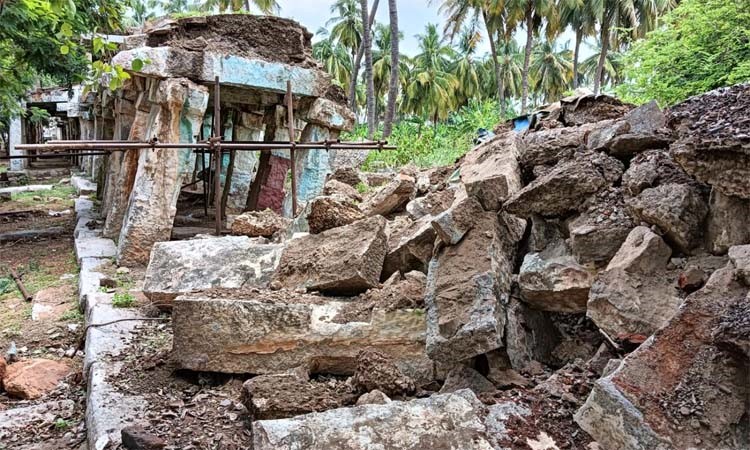Virupaksha Temple Hampi

- 27 May 2024
Why is it in the News?
The historical Saalu Mantap (pillar line), located on the premises of the Virupaksha Temple in Hampi, a UNESCO World Heritage Site, collapsed after heavy rain lashed the region on Tuesday night.
What is the Historical Significance of Virupaksha Temple?
- The Virupaksha temple gained prominence and underwent extensive expansion in the 14th century during the Vijayanagara Empire (1336 to 1646).
- Founded by Harihara I of the Sangama dynasty, the Vijayanagara Empire expanded from a strategic position on the banks of the Tungabhadra River to become one of the most powerful kingdoms of its time.
- The temple was built by Lakkan Dandesha, a nayaka (chieftain) under the ruler Deva Raya II, also known as Prauda Deva Raya of the Vijayanagara Empire.
- The temple flourished under the patronage of the Vijayanagara rulers, who were great builders and patrons of art.
- It became a vital centre for the religious and cultural activities of its time.
- It is a prime example of Dravidian temple architecture, characterised by its grand gopurams (towering gateways), the shikhara towering over the sanctum sanctorum, its intricate carvings and pillared halls.
- Richly adorned with carvings and sculptures, the gopuram depicts various deities, mythological scenes and animals.
- The sanctum sanctorum houses the Shiva lingam, the main object of worship.
- Historians say all temples had pavilions where traders sold articles, such as those used in worship.
- Sometimes devotees visiting the temple also camped under the pavilions.
- With several other temples and structures located there, Hampi was the empire’s capital city and stands today as evidence of what is known as the last ‘great Hindu empire’ of South India.
- UNESCO also recognised its uniqueness and categorised the Group of Monuments at Hampi as a World Heritage Site.
